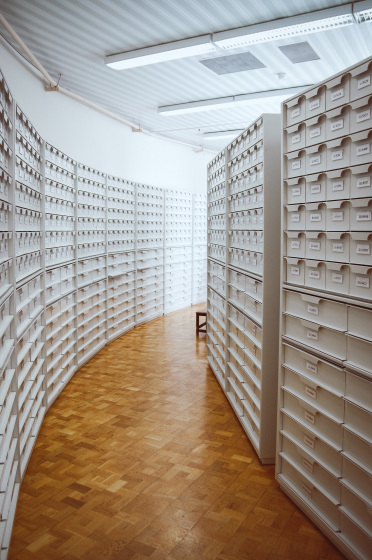'10 Computer Technologies That Transformed Science' Selected by Nature Magazine

From astronomy to zoology, computers are indispensable for the great scientific discoveries of our time. The scientific journal '
Ten computer codes that transformed science
https://www.nature.com/articles/d41586-021-00075-2
◆ 1: Programming language pioneer 'FORTRAN'
The earliest computers were by no means user-friendly, using punched cards to manually enter code. Writing code required knowledge of complex programming languages, but with the advent of FORTRAN , developed by IBM in the 1950s, it was easy to translate programs written in programming languages into languages that computers could actually process. It is now possible.
◆ 2: Fast Fourier transform
Invented by Carl Friedrich Gauss in 1805, an algorithm called the Fast Fourier Transform makes it possible to process complex signals that change over time at high speed. This algorithm is widely used in digital signal processing and image analysis in scientific fields such as radio astronomy , where it is necessary to replace frequencies with functions and visualize them in order to understand the properties of complex electromagnetic waves.

◆ 3: Biological database
Today's large-scale genome and protein data analysis and data storage systems have their
◆ 4: Atmospheric circulation model
At the end of World War II, computer pioneer John von Neumann worked on weather forecast reforms using computers used in ballistic orbit and weapons design. Until then, the weather was predicted by experience and intuition, but Neumann improved the prediction accuracy by constructing weather data for each model such as 'atmospheric model' and 'ocean model' and analyzing it with a computer. went.

◆ 5: BLAS
Technology for solving scientific and technological problems
◆ 6: NIH Image
Wayne Rasband, who worked in the National Institutes of Health (NIH) Brain Imaging Laboratory in the 1980s, devised a program for displaying and analyzing X-ray film on a computer. This program, called NIH Image , ran only on Mac OS, but was later evolved by NIH into an advanced image processing system called ImageJ , which is now used by other operating systems as well.
◆ 7: BLAST
In 1978, Margaret Oakley devised a system called ' Point Accept Mutation ' to identify the similarity and association of the primary structures of DNA and proteins. Nature says that this later became BLAST , which evolved faster and more accurately, and revolutionized the field of genetic biology at the time.
◆ 8: arXiv
In the late 1980s, scientists' research was generally shared only within a small community. However, in 1991, physicist Paul Ginsparg, who worked at the Los Alamos National Laboratory , devised a new system that could share his research widely. The system delivers science-related treatises and articles to registrants, limited to the physics community, then published to all disciplines and renamed arXiv (archive) in 1998. Continue to develop. As of 2021, about 1.8 million papers have been recorded, all of which are open to the public for free.

◆ 9: IPython Notebook
Python, one of the programming languages, is an interpreter type that executes while interpreting source code or intermediate representations sequentially. PhysicistFernando Perez thought, 'This language, which runs line by line, is not suitable for preloading modules or visualizing data required for scientific research,' and devised its own shell, ' IPython. ' did. Nature said the shell was later renamed 'IPython Notebook' and open sourced, revolutionizing the field of data science.
◆ 10: AlexNet
Artificial intelligence (AI) can be broadly divided into two types: those that use one systematic rule and those that can process information by machine learning. Alex Krizevsky and Ilya Satskeber , graduate students at the University of Toronto, developed a machine learning image recognition program ' AlexNet ' in 2015, and even the best algorithm at the time of the contest ' ImageNet ' to classify a large number of images into programs. AlexNet succeeded in reducing the error rate from about 25% to 15%.
Related Posts:
in Science, Posted by log1p_kr







